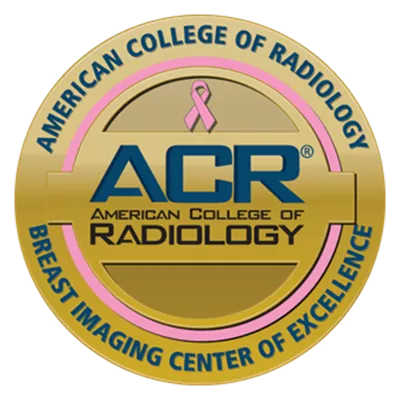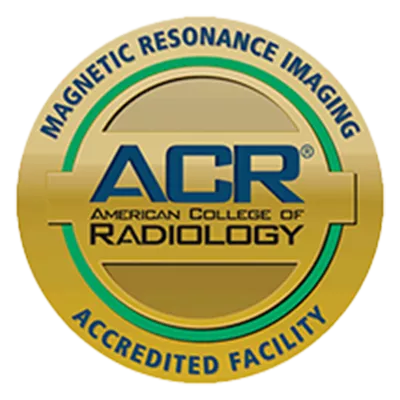
Advanced Imaging and Convenient Care
The best line of defense against breast cancer is early detection. And at AdventHealth, we want to make it easy for you to keep up with your routine screenings and stay well.
The advanced digital mammogram technology at our hospitals, including 3D mammography, can detect breast cancer up to two years earlier than self-examination. And our imaging specialists have advanced training and extensive expertise in detecting subtle differences between tissues, so we can carefully pinpoint areas of concern.

Understanding Mammography
Routine screening mammograms help save lives. That’s why we want you to feel ready to take charge of your breast health and understand what to expect from the imaging experience.
What Is Mammography?
Mammography is an X-ray examination of the breast. Mammograms make it possible to detect breast cancers, benign tumors and cysts — even before you can feel them. The latest digital mammography technology takes very detailed electronic images of your breasts, which can be enhanced by computer technology and even transmitted electronically.
When Should I Get a Mammogram?
Many factors determine when you should have a mammogram, such as your family history, risk factors, and age. Any woman over the age of 25 should have a diagnostic mammogram if they have any unusual breast symptoms — such as a lump, pain, nipple thickening or discharge — or a change in breast size or shape. Otherwise, screening mammograms usually begin at 40 and occur annually. Ask your doctor when you should begin annual screenings.
Are There Different Types of Mammograms?
Mammography may be used either for screenings or to make a diagnosis. A screening mammogram is an X-ray of the breast used to detect breast changes when you have no signs of breast cancer. It usually involves two X-rays of each breast. A diagnostic mammogram is an X-ray of the breast used to diagnose unusual breast changes, such as a lump, pain, nipple thickening or discharge, or a change in breast size or shape.
Schedule Your Mammogram
With convenient locations near you and easy online scheduling, we’re making it simple to book your mammogram.

Technology and Expertise That Gets You Answers
If you have concerns about your screening results or require follow-up testing, we know that any uncertainty can cause stress and anxiety. Rest assured that providing you with support and peace of mind, whatever your diagnosis, is our priority. Our expert breast surgeons are here to guide you through your options for both malignant and non-malignant breast diseases.
Our breast care centers are equipped with some of the most advanced technology and diagnostic tools, including 3D Mammography, Contrast-Enhanced Mammography and SCOUT® technology.* Contrast-Enhanced Mammography is used to detect tumors in dense breast tissue, and SCOUT® is a new, more comfortable and convenient surgical option for breast cancer surgery.
From our imaging teams and care coordinators to experienced breast surgeons, we work together to support you on your journey to renewed health.
*Not available at all facilities.

Be Informed and Feel Empowered
Our care team has created a guide to address some of your concerns about mammography and ease your mind. This downloadable guide provides answers to questions like:
- Who should get a mammogram?
- How is a mammogram performed?
- Is a mammogram painful?
- Are there different types of mammograms?
- How do I schedule a mammogram?
- How will I receive my results?
Understanding Your Mammogram
Hear how our patients faced breast cancer — and overcame it — with a supportive team with them every step of the way.

Breast Cancer Survivorship at AdventHealth

Dr. David Rippe discusses what a radiologist will look for on your mammogram.
Surgery With Precision and Compassion
We understand that facing a lumpectomy, mastectomy or other breast procedure can be difficult. But when you trust us to care for you, we’re here to support you physically and emotionally. In addition to providing a listening ear and a personal touch, our board-certified breast surgeons work with plastic and reconstructive surgeons to provide same-day reconstruction and get you on the path to recovery and confidence as soon as possible.

Making It Easy With Mobile Mammography
Because getting mammograms regularly is so important, we're dedicated to making it easier than ever. With a fleet of coach buses, AdventHealth Mobile Mammography travels close to where you live and work, offering convenient screenings with results available in minutes.
Award-Winning Care That Inspires Confidence
It’s important to us that the care you receive is rewarding in more ways than one. We’ve been recognized for our commitment to the highest standards of patient care and making sure your needs are met, each time you see us.

American College of Radiology Breast Imaging Centers of Excellence
American College of Radiology Breast Imaging Centers of Excellence
Our hospitals are recognized by the American College of Radiology as Breast Imaging Centers of Excellence.
- AdventHealth Sebring
- AdventHealth Tampa
- AdventHealth Wesley Chapel

American College of Radiology Mammography Accreditation
American College of Radiology Mammography Accreditation
Our hospitals have received the American College of Radiology Mammography Accreditation for excellent breast imaging and patient safety.
- AdventHealth Sebring
- AdventHealth Wesley Chapel

American College of Radiology Stereotactic Breast Biopsy Accreditation
American College of Radiology Stereotactic Breast Biopsy Accreditation
AdventHealth Sebring has received the American College of Radiology Stereotactic Breast Biopsy Accreditation for outstanding image quality and patient safety.

American College of Radiology Breast Magnetic Resonance Imaging (MRI) Accreditation
American College of Radiology Breast Magnetic Resonance Imaging (MRI) Accreditation
Our hospitals have received magnetic resonance imaging (MRI) accreditation from the American College of Radiology.
- AdventHealth Lake Placid
- AdventHealth Sabring
- AdventHealth Wachula

The Leapfrog Group Hospital Safety Grade "A"
The Leapfrog Group Hospital Safety Grade "A"
Our local hospitals are recognized among America’s highest-rated hospitals for patient safety by The Leapfrog Group. We're committed to maintaining the highest standards of safety and care.
- AdventHealth Carrollwood
- AdventHealth Dade City
- AdventHealth Lake Wales
- AdventHealth North Pinellas
- AdventHealth Ocala
- AdventHealth Wesley Chapel
- AdventHealth Zephyrhills

Nationally Recognized for Patient Safety, Quality and Transparency
Nationally Recognized for Patient Safety, Quality and Transparency
The Leapfrog Group has exclusively recognized AdventHealth with the Emerald Award for remarkable achievements and leadership in patient safety, quality and transparency by a health care system, including maintaining a culture of excellence throughout all levels of the organization. Delivering consistent, high-quality, whole-person care is our priority, and we’re honored to be the first health care system to earn this award.
Your Partner in Breast Health and Whole Health
If you need to schedule a mammogram, please don’t delay.
Our care coordinators are standing by and will reply to your appointment request within 48 hours. They will also be there to guide you and answer any questions you may have, every step of the way.
Or call us at 844-464-2284.

